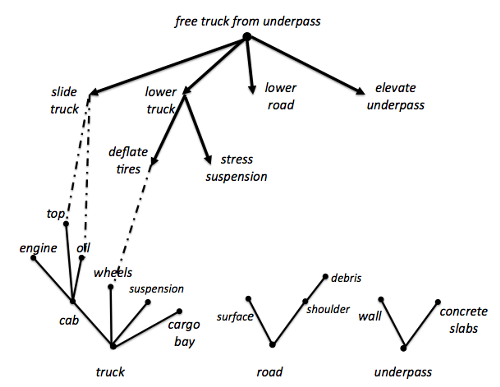
How many times have you brainstormed with your team, only to come out of the session with one mediocre, plausible idea? And when you reflect on how the meeting proceeded, you recall that there was one voice louder than all the others, very few competing points of views, lots of nodding heads, and more lunching than learning? You’re not alone. We’ve seen it and have even been a part of it ourselves. Welcome to what many believe to be the pitfalls of brainstorming.
The Rise of Brainstorming
In the 1939, advertising executive Alex F. Osborn was looking for a new way to problem solve. His employees were unable to develop creative ideas individually, so when he began hosting meetings in groups and found an improvement in the quality and quantity of ideas produced, brainstorming was born. Osborn coined the term brainstorming as the process in which a group of people meet to generate new ideas around a specific topic. Brainstorming has rules, which include:
- Withhold criticism. All criticism of ideas is put on hold. Focus should be on developing and adding to ideas, and criticism is to come at a later stage in the process.
- Encourage unusual ideas. Creativity is born from the unusual. Accepting ideas even if they seem unusual allows for a long list of ideas. An unusual idea can also be interpreted as a new way of looking at a problem.
- Combine and improve ideas: Many good ideas may be combined to form one amazing idea.
And the Fall...
For the past 75 years, entrepreneurs, corporations and business schools have all faithfully practised the brainstorming technique. But observations that oppose the concept and criticize its merits have led to its gradual decline in popularity. These include:
- Brainstorming can lead to fixation on only one idea.
- Humans unconsciously mimic others, which leads to idea conformity (Groupthink!).
- Social behaviour leads humans to be agreeable and desire to fit in, preventing the unleashing of individual creativity.
- Sessions do not allow for a mental incubation period in participants, which stunts creativity.
- Extroverts dominate while introverts follow—totally negating the technique’s purpose.
- The practice eventually becomes a feel-good way to boast of productivity.
Enter the Swarm
Today, cognitive psychologist Tony McCaffrey shares with us in the Harvard Business Review his video Brainswarming: Because Brainstorming Doesn’t Work. Brainswarming is based on the observation of how swarms of insects solve problems. Bit by bit, insects leave traces in their environment that influence the behaviour of other members. McCaffrey borrows this idea to create the brainswarming technique. Instead of talking, brainswarming is a solo event that uses sticky notes or an electronic whiteboard. The facilitator indicates the problem across the top, while the resources are listed on the bottom. On their own time and accessed individually, group members add and build ideas either working from the top down or from the bottom up, thereby leaving a dynamically growing graph of solutions for others to build upon.

photo courtesy of Tom McCaffrey http://brainplay.wikia.com/wiki/Brainswarming
How brainswarming avoids the problems of brainstorming
We really believe brainswarming encourages a group to problem solve while avoiding the pitfalls that hinder traditional brainstorming. Here’s how:
- Participants are not all sitting together in one room, staring eye-to-eye at each other. No pressures to conform and practice Groupthink here!
- Brainswarming can be conducted anonymously, so members don’t feel the need to fit in or appear agreeable. This opens the gates for creativity.
- The session is not limited to one meeting. This allows participants to have the mental incubation period that is missing in the brainstorming technique.
- Ideas are written down and are not at the mercy of the character dynamics in the room. All thinking is delivered and communicated in a balanced way, regardless of personality type.
- The practice actually creates tangible results that everyone can see, which becomes a clear evidence of productivity.
For us at Radii, brainswarming’s most promising nugget is the ability for our groups operating in the Pacific and Eastern time zones to efficiently work online and hack away creatively towards a solution (or three!). So what do you think of brainswarming? Maybe your team has already tried it out? We’d love to know and are looking forward to hearing your comments or experiences.
